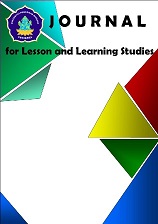The Effectiveness of Baamboozle Game as a Learning Media for Flat Geometry in Improving Students' Problem-Solving Skills
DOI:
https://doi.org/10.23887/jlls.v7i3.82754Keywords:
Game Baamboozle, Problem-Solving, Flat Geometry, Learning MediaAbstract
The issue of low mathematical problem-solving abilities among students requires innovative, interactive, and effective learning media. This study aims to develop and implement the Baamboozle game as a mathematical learning media for flat geometry material for fifth-grade students. The study employed the Research and Development (R&D) method with the ADDIE model, which includes five stages: analysis, design, development, implementation, and evaluation. The research subjects consisted of fifth-grade students and teachers. Data were collected through expert validation tests, student response questionnaires, and pretest and posttest assessments. Data analysis was performed descriptively and inferentially to assess the media's feasibility and effectiveness. The results showed that the Baamboozle game was highly feasible for use in learning, based on expert validation with high scores and positive student feedback. Moreover, the use of this game significantly improved students' mathematical problem-solving abilities, as evidenced by the significant increase in posttest scores compared to pretest scores, with a significance level of < 0.001. The conclusion of this study is that the Baamboozle game is effective as a mathematical learning media, particularly for flat geometry material, in enhancing students' problem-solving abilities.
Published
How to Cite
Issue
Section
License
Copyright (c) 2024 Hilda, Fitria Dwi Prasetyaningtyas

This work is licensed under a Creative Commons Attribution-ShareAlike 4.0 International License.
Authors who publish with the Journal for Lesson and Learning Studies agree to the following terms:
- Authors retain copyright and grant the journal the right of first publication with the work simultaneously licensed under a Creative Commons Attribution License (CC BY-SA 4.0) that allows others to share the work with an acknowledgment of the work's authorship and initial publication in this journal.
- Authors are able to enter into separate, additional contractual arrangements for the non-exclusive distribution of the journal's published version of the work (e.g., post it to an institutional repository or publish it in a book), with an acknowledgment of its initial publication in this journal.
- Authors are permitted and encouraged to post their work online (e.g., in institutional repositories or on their website) prior to and during the submission process, as it can lead to productive exchanges, as well as earlier and greater citation of published work. (See The Effect of Open Access)




